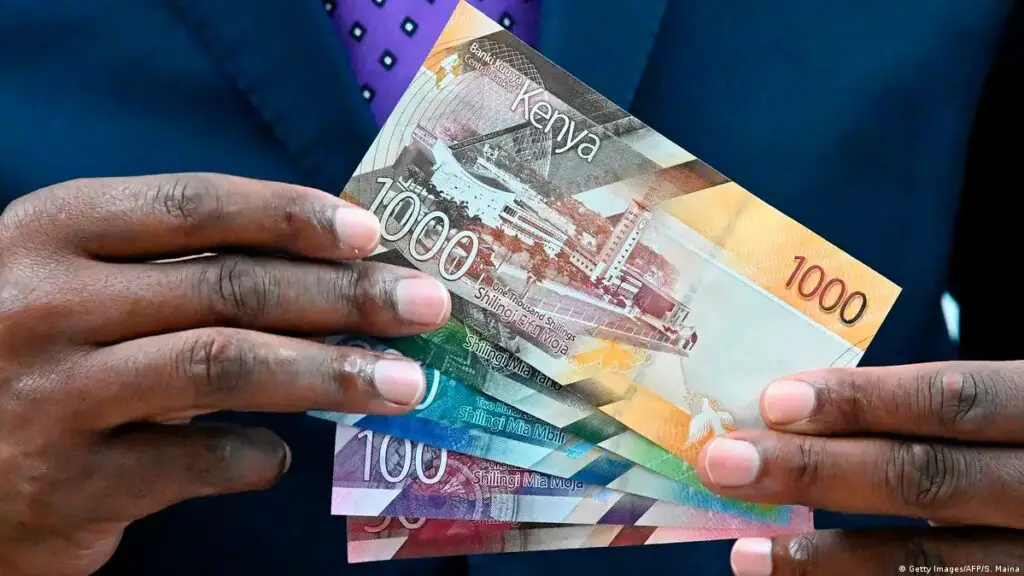- The Kenyan shilling has made a strong turnaround against the US dollar this week,
- Last Tuesday, Kenya successfully raised $1.5 billion from its Eurobonds buyback offer initiated on February 7, reducing the chance of defaulting payment on its $2-billion-dollar debt due in June.
- East Africa’s most robust economy plans to use the funds to repay its debut Eurobond issued in 2014.
The Kenyan shilling has made a strong turnaround against the Ubest human hair wigs for black females jordan air force 1 latex hood sac eastpak nike air jordan 1 elevate low smith and soul johnny manziel jersey jordan max aura 4 dallas cowboys slippers mens johnny manziel jersey bouncing putty egg adidas yeezy boost 350 turtle dove luvme human hair wigs jordan proto max 720 uberlube luxury lubricant S dollar this week, moving towards the most potent levels since March last year, mainly on investor confidence and increased inflows.
The shilling, which rallied against the dollar, gaining about 10 per cent, comes from a strong demand for the country’s Eurobond and an oversubscribed local infrastructure bond.
Last Tuesday, Kenya successfully raised $1.5 billion from its Eurobonds buyback offer initiated on February 7, reducing the chance of defaulting payment on its $2-billion-dollar debt due in June.
East Africa’s most robust economy plans to use the funds to repay its debut Eurobond issued in 2014.
The new loan, divided into three instalments, has an average life of six years and is expected to mature in 2031, according to the country’s National Treasury.
The bond is priced at 10.37 per cent, the highest rate an African state has ever offered. Cote D’Ivoire’s January issuance and Benin’s February bonds, which raised $2.6 billion and $750 million, were priced at between 8.5 and 7.5 per cent.
“The proceeds of the 2023 Eurobonds will fund the offer to buy Kenya’s’ existing $2 billion Eurobonds due in 2024,” Treasury had indicated.
This week, the government also raised Ksh240.9 billion ($1.7 billion) in the latest infrastructure bond issued by the Central Bank of Kenya (CBK), which was oversubscribed by 412.37 per cent, indicating strong investor confidence in Kenya’s’ economic prospects and the government’s fiscal management.
The two bonds are the primary catalysts to the shilling’s strengthening, rallying 165 units to the US dollar this month.
It had shed over 31 per cent of its value to the dollar year-to-date, as the Fed Rate hikes in the US to tame inflation took a toll on currencies worldwide, with developing countries bearing the most significant impact.
The local currency had also depreciated against the South African Rand, Tanzania Shilling, and Uganda Shilling when the Nairobi Securities Exchange experienced an investor flight amid a bear run last year.
Read also: Nairobi Securities Exchange shows recovery signs after 2023 bear run
Returns on investment
This came as investors sought better returns, mainly in the US market, where investments offer higher returns.
According to the Capital Markets Authority (CMA), investors in stocks at the bourse lost at least $3.3 billion in paper wealth last year on capital flight as the shilling slid against major currencies.
CMA’s’ quarterly statistical bulletin for the period ending December 31, 2023, shows the total market capitalisation at the Nairobi bourse, which closed at $8.8 billion.
The shilling, however, made a surprising run against the US dollar this week, pressing down the dollar to an exchange rate of 145.85, from an average of 162, in just two days.
There was also a panic release of dollars by those hoarding, market trends indicate, which placed more currency in the market, forcing the CBK to buy in a move meant to curb the shilling’s volatility.
Read also: Tumbling Kenyan Shilling Headache for Government as Households Remain Vulnerable.
Positive outlook as the Kenyan Shilling strengthens against the dollar
The Kenya Bankers Association (KBA) notes that the Kenya Shilling strengthened significantly against the US dollar.
Since Kenya liberalised its capital account in the 1990s, bankers said the exchange rate is expected to move in either direction to reflect supply and demand at any given time.
The latest move is rightly attributable to growing confidence in Kenya’s macro-economic performance and outlook, including the recent floatation and successful pricing of a $1.5 Eurobond and the successful issuance and sale of an 8.5-year infrastructure bond, it said.
“It is instructive to note that as significant players in the domestic market, the majority of our members participated quite strongly in the KES 70 Billion infrastructure bond, and banks hold just about 50 per cent of outstanding public debt stock,” said John Gachora, chairman Kenya Bankers Association and NCBA Group managing director.
Data from the CBK confirms that the infrastructure bond received total bids worth Ksh288 billion $1.9 billion), and CBK accepted $ 1.7 billion (Ksh240.9 billion) and $1.5 billion (Ksh218 billion) in competitive bids.
“Expectedly, the infrastructure bond elicited considerable foreign investor appetite, leading to the shilling rally, especially on the back of the sovereign’s successful Eurobond issuance that beat back quite convincingly earlier difficult risk concerns,” Gachora said.
Read also: Kenya’s’ $1.5 Billion Eurobond Issuance Sparks Economic Optimism.
Excess dollars in the market
However, a panic exchange in the forex market by those who were hoarding, coupled with the inflows, pushed CBK to move and buy some dollars to evade volatility.
According to the apex bank, it only intervenes to smooth out volatility when the shilling moves too fast in either direction and is likely to distort the market.
This has also helped maintain the country’s forex reserve, which has remained exposed to high debt repayment, especially the Eurobond.
The usable foreign exchange reserves stood at $7.03 billion as of Friday, which is 3.8 months of import cover.
This meets the CBK’s statutory requirement to endeavour to maintain at least four months of import cover.
The previous week, the reserves were at 7.13 billion, meaning spending on imports and debt repayment ate into the forex kitty.
Meanwhile, financial experts feel the shilling will settle at an average of 150 units a dollar, at least in the medium term, with some questioning the fast pace it has strengthened.
“FIM Partners expects the Kenya shilling to stabilise soon, and around 150/$ is easy to justify from an economist’s point of view. In my view, a little weaker at 155-160/$ would suit Kenya better to shrink the current account deficit,” said Charles Robertson, Head of Micro Strategy at FIM Partners
Rufas Kamau, Research and Markets Analyst at FXPesa, a forex trading platform, said: “It almost feels like a coordinated effort to cause market-wide panic so Kenyans can sell their dollars cheap. What fundamental factor has changed to warrant this strengthening of the Kenyan shilling? Did we discover gold?.”
Impact on businesses and households
The extreme volatility in the Kenya shilling exchange rate is not advised as it affects business contracts and product pricing, as Kenya remains a net importer.
However, strengthening the shilling is good news to Kenyan households as it means cheaper imports.
This also translates to a lower cost of living where the country’s inflation has remained high due to costly imports, which have wiped out gains made in cheaper food commodities produced locally.
According to the Kenya National Bureau of Statistics(KNBS), January inflation increased to 6.9 per cent from December 6.6 per cent, the highest inflation rate since October 2023.
The overall year-on-year inflation rate as measured by the Consumer Price Index (CPI) was higher than that of January 2023, mainly driven by increases in prices of commodities under transport (10.6%), housing, water, electricity, gas and other fuels (9.7%); and food and non-alcoholic beverages (7.9%), between January 2023 and January 2024.
These three divisions account for over 57 per cent of the weights of the 13 broad categories. The CPI and inflation are generated from data collected through monthly surveys of retail prices that target a representative basket of household consumption goods and services.
The data collection is conducted in the second and third weeks of the month from a representative sample of outlets located in 50 data collection zones across the country.
“The food and non-alcoholic beverages index rose by 0.4 per cent between December 2023 and January 2024,” KNBS Director General Macdonald Obudho said.
Read also: Kenya’s’ January inflation peaks 6.9 per cent amid soaring food prices.
Shilling and debt
Meanwhile, the strengthening of the shilling is also welcomed by the government, which has been under pressure by the rising debt value of a weaker currency, adding to inflationary pressures.
It is estimated that Kenya’s stock of external debts and the cost of repayment is increasing by an average of $19.4 million daily as the shilling sheds its value against the US dollar.
Kenya’s debt stood at $76.8 billion in December, Central Bank of Kenya’s’ latest data shows, compared to $63.1 billion in the same period in 2022.
The country’s distressed debt levels, as highlighted by the International Monetary Fund (IMF), pose challenges in effectively managing the servicing of external obligations.
Latest National Treasury data shows Kenya’s debt repayment reached $3.7 billion in 2023, with the high repayment hitting forex reserves.
Debt repayment consumed up to 57 per cent of tax revenues, leaving the government with about 43 per cent to meet its recurrent and development expenditure plans, forcing the country to continue borrowing to bridge the deficit.
Kenya’s external debt service as a proportion of exports is significantly above the level the IMF considers sustainable for a country like Kenya.
Even if the IMF reclassified Kenya as a country with “high” debt-carrying capacity, it would still breach the upper limit until at least 2027.
Fiscal consolidation undertaken by the government over the past two years has relied on adjustments to expenditure, but revenues have yet to recover fully to their pre-pandemic level.
According to a report by the Parliamentary Budget Office, the government could miss its ordinary revenue target by about $ 1.8 billion if the current trends continue.
Revenue mobilisation fell sharply in 2019/20 due to the measures implemented to reduce the tax burden on businesses during the pandemic.
Despite various reform measures being undertaken since then, revenues have slowly returned to pre-pandemic levels and have lagged previous projections and targets.
Kenya Revenue Authority is running behind its revenue target for the current financial year ending June 30, which had been set at $15.8 billion.











